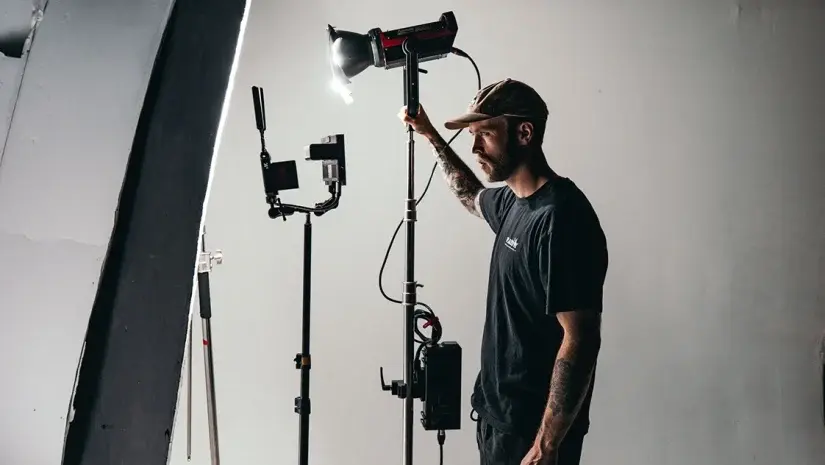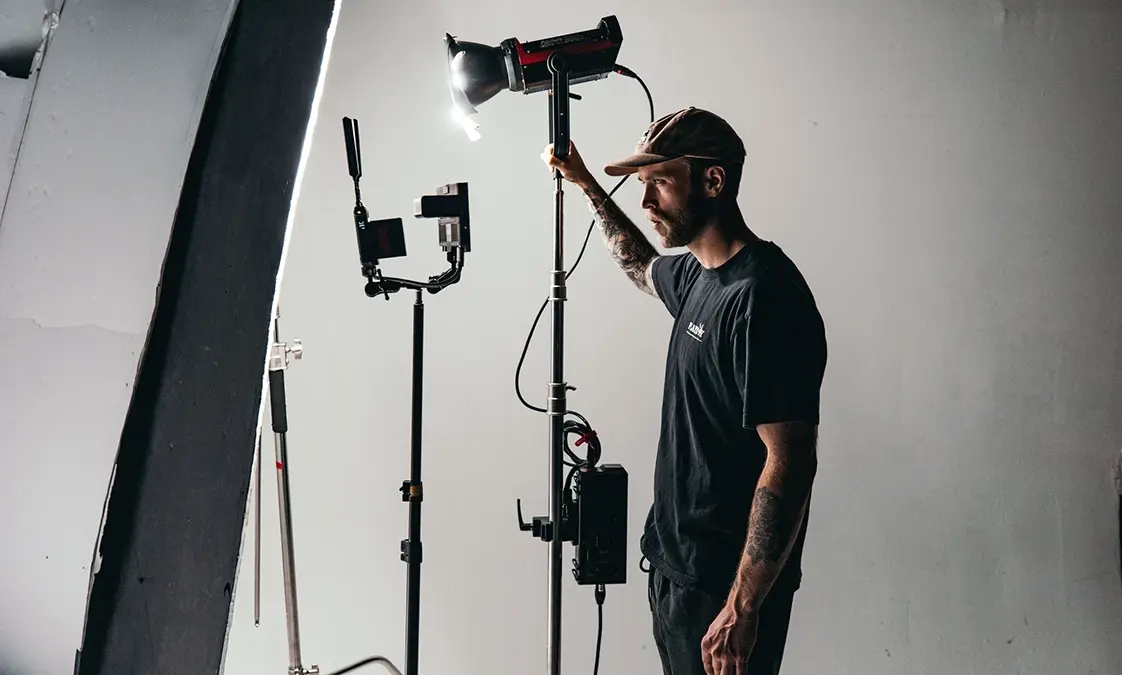Tech has advanced to a point where anyone can grab their phone and snap a quick pic, making it more tough than it already was to stand out as a photographer. The key to setting yourself apart is figuring out how to be different or better, or both, than the crowd. Keep reading this and you’ll be a step in the right direction of learning how to stand out in the photography industry.
Let’s examine how exactly to stand out in the photography market today. Don’t worry — it’s not rocket science at all. Here’s your comprehensive guide to standing out as a photographer.
Step 1: Determine the style you love (and stick with it)!

Let’s face it — your next-door neighbor probably has a decent camera and a flashy Instagram feed filled with sunsets and latte art. The question is: Why should someone pay you to do the job? This is where your style comes in. Your style isn’t just about the technicalities of your camera settings, it’s your visual identity. Your signature look is what separates you from the rest of the crowd and makes people say, “Oh, that’s totally a you photo!”
How to do it:
- Experiment with different genres: Try everything. Do a dreamy portrait shoot, capture some street photography, or immerse yourself in nature shots. Don’t stress if it feels random — experimenting helps you identify what feels natural and what you’re passionate about.
- Refine your technique: Once you’ve found your calling, could be candid wedding shots or urban landscapes, get nerdy about your settings. Toy around with lighting, color grading, and composition until you create a style that feels distinctly yours.
- Stay consistent: Consistency builds recognition. Don’t confuse your audience by dabbling in too many styles unless versatility is your style. Clients love predictability in results.

Step 2: Learn how to tell stories.
A technically perfect photo might impress other photographers, but your clients? They want to feel something. It could be a snapshot of an emotional wedding ceremony, people dancing in a concert, or even the bleakness of a quiet landscape, your photos should stir emotions and spark curiosity.
How to do it:
- Focus on emotions: Don’t get caught up in obsessing over perfect lighting or sharpness. Instead, ask yourself, “What’s the story here?” and use your technical skills to enhance it. Is it a love story, a struggle, a triumph? Make the viewer feel it.
- Post-processing: Adjust the colors, contrast, and textures to shift the mood of a photo, if you ever need to. Yes, even if the original shot was “bad.”
Step 3: Build an amazing online presence.
Not having a well-oiled online presence might make clients miss out on your creative power. Therefore, building an online presence makes you more discoverable and shows clients that you’re a legit professional.
How to do it:

- Have a great website: If you build a website that’s clutter-free and easy to navigate, you make the experience of getting to know you way easier for your clients. Make your portfolio easily accessible, pepper in client testimonials, and add an About page that shares your story.
- SEO, SEO, SEO: You can have the most beautiful website in the world, but if it’s not optimized for search engines, you’re invisible. Do keyword research (hint: “[Your City] + Photographer” is a great starting point), optimize your images, and write compelling meta descriptions for each page. This will help your site pop up when potential clients are Googling for photographers in your niche.
- Curate your social media: Social media, especially Instagram, is your dynamic portfolio. Post regularly to show that you’re active and engaged. Keep your feed cohesive to reflect your style. Oh, and engage with your followers — like, comment, and build a little community around your work.
Step 4: Offer your clients what they can’t find elsewhere.
From the first DM to the moment they receive their final gallery, you’re giving them an experience. The more personal and smooth you make that process, the more memorable it becomes. And let’s face it: in the world of photography, people talk. Word of mouth is still golden, and happy clients will sing your praises long after their shoot is over.
How to do it:

- Respond with haste: A fast, friendly response sets the tone right from the start. You don’t need to be glued to your email 24/7, but timely communication (think 24–48 hours max) shows professionalism and interest.
- Set expectations early: Create an onboarding process where you clearly outline how the shoot will go, what clients can expect, and any key info they’ll need (like what to wear, how long the session will be, etc.). This removes any uncertainty and helps your clients relax, knowing they’re in good hands.
- Go the extra mile: Whether it’s sending sneak peeks of their gallery within 48 hours or delivering beautifully packaged prints, small surprises go a long way. They add a touch of luxury to your service and make your clients feel valued.
- Be professional but friendly: During the shoot, strike a balance between being approachable and organized. Help your clients feel comfortable, offer encouragement, and give gentle guidance when needed. A relaxed client = better photos.
Step 5: Collaborate with other creators.
Another step in how to stand out in the photography industry is collaboration. And a wonderful tactic it is! It pulls you out of your creative space. Teaming up with other professionals like makeup artists, videographers, or stylists refreshes your creative energy and expands your reach.
How to do it:
- Team up with locals: Find makeup artists, hair stylists, designers, or videographers in your area and strike up a conversation to propose a collaboration. Tell them what’s in it for them (such as engagement, more clients, etc.) so everyone knows it’s a win-win.
- Shoot for local businesses or influencers: Reach out to small businesses or local influencers and offer your photography skills in exchange for exposure (and no, not just for “free exposure” — be sure to set expectations around credit and collaboration). This’ll get your name and photos in front of a new and relevant audience.
- Work with models or other creatives for portfolio building: Sometimes, shooting purely for the sake of creativity with no client expectations can be revitalizing. Work with local models or other creatives on passion projects that benefit both your portfolios.
Step 6: Educate your budding audience.
YouTube tutorials and TikTok how-to videos go viral all the time now, so it’s safe to say people love learning from experts. In times like these, it’s not just sharing, it’s even a smart marketing strategy. When you educate your audience, you position yourself as an expert. It builds trust, adds value, and sets you apart.

How to do it:
- Offer free resources: Consider creating downloadable guides, checklists, or mini-courses that offer something valuable to your audience. For example, “5 Tips for Stunning Family Photos” could be a great freebie that potential clients will appreciate—and it shows them you know your stuff.
- Pull them in with content: Start small by sharing behind-the-scenes insights or photography tips on Instagram reels, stories, or blog posts. It could be something as simple as explaining why shooting during golden hour is the best or how you edit a particular shot.
- Start a blog/channel: If you want to dive deeper, consider creating longer-form content. This could be tutorials for aspiring photographers, advice for clients on preparing for shoots, or insights into the creative process. Regularly posting valuable content helps with SEO and keeps you top of mind for clients.
Step 7: Always be consistent.
Consistency is the secret to how to stand out in the photography industry. Be consistent by editing style, social media posts, or how you communicate with clients, because being steady and reliable builds trust. The truth is: clients are more likely to hire someone they know they can count on.
How to do it:

- Post regularly: Even if you don’t feel like posting every day, you gotta pull through. All for consistency. Pick a schedule and maintain it to keep your name and photos on the radar.
- Maintain a uniform editing style: Find your signature look and stick to it. Pick from vibrant colors, soft pastels, or moody shadows, having a consistent editing style makes your work recognizable.
- Deliver on time: If you’ve promised photos in two weeks, stick to it. Reliability in delivering work on time shows professionalism and builds trust with your clients.
Step 8: Find a niche market, if you dare!
When you try too hard to make everyone like your general photography, you risk missing out on clients and your full potential, and that’s bad news. But listen to this: how about learning how to stand out in the photography industry by finding a specialty? Not just any specialty BTW, one that aligns with your passion and skills can help you carve out a unique space for yourself.
How to do it:

- Identify your strengths and passions: What do you love shooting the most? What kind of clients do you enjoy working with? Let your passion guide your niche selection.
- Make content about your niche: Blog posts, social media captions, or TikToks – whatever you choose, make sure your content speaks directly to your ideal clients.
- Optimize your SEO for your niche: Use niche-specific keywords on your website and blog to attract your target clients. For instance, instead of just “photographer,” try “boho wedding photographer in [Your City].”
FAQs on How to Stand Out in the Photography Industry
Improve your photography skills, focus on delivering an exceptional client experience, building a strong online presence, and leveraging social media. Specializing in a niche can also make you stand out.
SEO (Search Engine Optimization) makes it easier for potential clients to find you on the internet. Sprinkling your posts with relevant keywords, adding relevant alt-text for images and good meta descriptions, and writing quality blog content will improve your rankings in search engine results, attracting more traffic to your website.
Aim for at least 2–3 posts per week. Use scheduling tools to help maintain a steady online presence without the stress. Each post should showcase your best work and reflect your style so that when the algorithm is in your favor, it’ll earn you a follow or two.
Offering occasional discounts or referral bonuses can incentivize repeat business and new client referrals. Just be strategic — make sure these offers align with your brand and don’t devalue your work.
Final Thoughts

Standing out in the saturated photography market may seem bone-chilling. It is hard to do, but develop a unique style, master storytelling, and offer an exceptional client experience, and you’ll be good. Also, never underestimate the power of a strong online presence, collaborating with others, and continually learning new skills. Consistency and realness go a very long way.
Standing out isn’t about trying to do everything — it’s about doing the right things well. So take those bold steps, keep refining your craft, and watch your photography brand rise above the rest.





